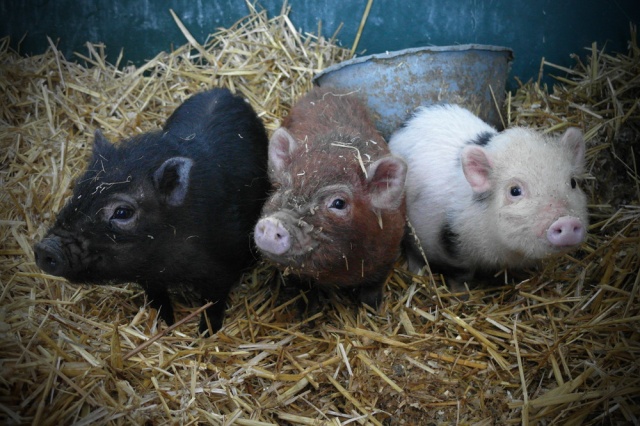
Margaret Ackland, Plastic Bag, Oil on Linen
Most of us now subscribe to the idea that plastic bags are bad for the environment. Hence, droves of people turn up at their local supermarket with a sturdy jute bag in tow. Now, there’s evidence that the items that get placed into plastic bags also have a terrible time, especially if they’re biological in origin.
Take the case of pig farmers in Spain. In Spring 2010, 41 farms across Spain reported issues with their lady pigs failing to get pregnant after artificial insemination. The ensuing biological detective hunt found that sperm quality was high (it was good and wriggly, and donated from several different boars, ruling out a genetic incompatibility) and the fertility of the potential mother pigs was good. All the animals were in good health, and they were kept in comfortable, well-fed conditions.
One of the factors that all the farms had in common was the brand of plastic bag being used to store the boar semen until it got pumped into the lady pig. In fact, the longer the semen was kept in these bags, the greater the decrease in fertility.
Plastic bags: a chemical cocktail
Concerned that a chemical contaminant may be to blame, scientists at the Universidad de Zaragoza passed an old batch of “good” bags and a new batch of “suspicious” bags through a mass spectrometer (a machine that breaks materials up into their chemical components). They found that the “suspicious” bags contained five extra chemicals that weren’t present in the “good” bags: 1) octyl phthalate, 2) 13-docosenamide, 3) BADGE (a derivative of Bisphenol A), 4) 1,4-trioxacyclotridecane-8,13-dione (a cyclic lactone) and 5) diethylene glycol cyclic phthalate. These chemicals formed part of the adhesive used to manufacture the multilayer bags.
Three of these chemicals (BADGE, 1,4-trioxacyclotridecane-8,13-dione and diethylene glycol cyclic phthalate) were actually capable of leaching out of the bags into the fluid they contained (sterile water was used as a less messy substitute for boar semen to find this out). Yet in a dish, mixing these three chemicals with boar semen had no impact on sperm quality: no obvious abnormalities were seen, and the sperm were still able to penetrate eggs in a fish.
Finally, the ultimate test was performed: if semen spiked with these three chemicals was infused into a lady pig, would there be an outrageous lack of cute pink piglets born? Sure enough, there was a drop in the fertility rate from 84% to 58%, and the number of piglets being born fell from 231 to 70.
About your plastic water bottle…
This study didn’t go as far as identifying exactly how these chemicals were messing up fertilisation: the authors speculated that blastocyst implantation or early development may have been affected. However it happened, though, this is definitely a cautionary tale for using plastic bags as storage containers, with significant relevance for human artificial insemination. The leaching of such chemicals into the environment as plastic bags break down on landfill remains a sure source of concern to humans and pigs alike.
Nerin C, Ubeda JL, Alfaro P, Dahmani Y, Aznar M, Canellas E, & Ausejo R (2014). Compounds from multilayer plastic bags cause reproductive failures in artificial insemination. Scientific reports, 4 PMID: 24810330






many folks are writing about their concerns of plastic. thanks for the info
Perhaps the best reason to avoid plastic bags i’ve heard yet! Great post 🙂